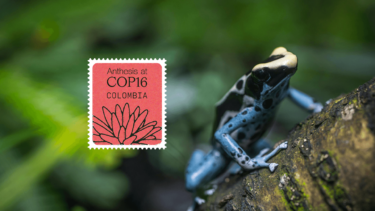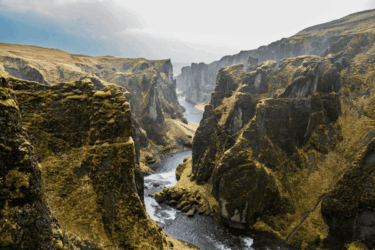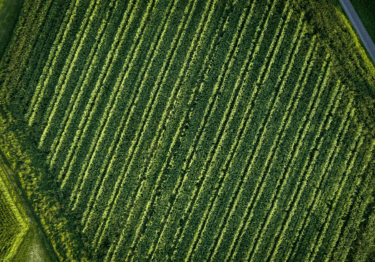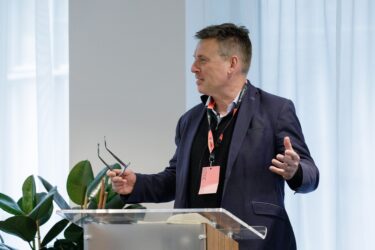
Speakers
Chris Peterson – Director
Bianca Nijhof – Global Lead for Nature Growth
Betsy Hickman – Nature Lead for the Americas
Related Topics
Mentioned Resources
- Framework for Integrated Decision-making – Capitals Coalition
- Measuring Nature – Nature Positive Initiative
Share this episode
In this episode of our Activating Sustainability series, our host Chris Peterson is joined by Anthesis colleagues Bianca Nijhof, Global Lead for Nature Growth, and Betsy Hickman, Nature Lead for the Americas, who recently attended COP16 in Cali, Colombia. Together, Betsy and Bianca highlight key experiences, takeaways, and implications from this year’s event.
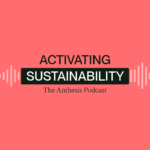
Read the transcript
Chris Peterson: Hello and welcome to Activating Sustainability, the Anthesis Podcast. I’m your host Chris Peterson. I’m really pleased to be joined by two Anthesians who attended COP16 in Cali, Colombia to hear about the experiences, takeaways, and implications. Betsy Hickman, Nature Lead for the Americas, and Bianca Nijhoff, Global Lead for Nature Growth.
Welcome to the podcast. Thanks so much for joining us.
Bianca Nijhof: Thank you for having us, Chris.
Betsy Hickman: It is a pleasure to be here for us. I’m so excited to dig in and share more about our experience
Chris Peterson: I love it. Maybe before we jump into it, Bianca you’re in a very unique place for a podcast recording. I wonder if maybe you could just describe a little bit of where you are and what you’re seeing.
Bianca Nijhof: Yeah, more than happy to, Chris. Yeah, I took the opportunity to get to know a bit more of Colombia because it’s such a biodiverse country and it’s known for that. So yeah, I’m joining you from this small coffee farm, which is run by Jaime here in Colombia, close to Jardin. It’s a beautiful place.
I’m actually, to be very honest, in my hammock in front of a cabana, which he rents out. Looking at his coffee and banana plantations and seeing the hummingbirds fly by, and you can hear the birds tweak in the background. And it’s beautiful to get to understand and to know how he, in a sustainable way, farms and really makes a living of very good quality coffee.
So it’s amazing to be able to be here.
Chris Peterson: That’s fantastic and seems really appropriate for the conversation we’re going to have today. I know the 2 of you attended COP16 in Cali and would love to hear from both of you in terms of how, what was it like to be there? And what were some of your overall impressions from the experience?
Bianca Nijhof: Yeah, maybe I should start here being in Colombia still and it was the hospitality of in Colombia was really great and the pride to Colombians taken in the biodiverse and rich country they are. I think COP16 as a follow up of Montréal, there’s a couple of takeaways from me. The fact that it was a business COP and the business attendance was actually three times more than in Montréal. I think that shows the importance of this COP. The other thing which I think the Colombians did amazingly well is making it a people’s COP. So we didn’t only have the blue zone where we were where the negotiations were part of, where you saw a lot of the sessions and businesses being part, but there was the green zone as well, which is in the middle of town, really with Colombian people coming from every part of the country really selling their products, but also a lot of people joining in to get to know what a COP is all about and how we jointly, ’cause this is a global effort, right? How the challenges we face on nature and biodiversity. So it was also how can everybody engage in that and pick their role in that. I think that, for me was a very important point in COP.
Betsy Hickman: And building off of that. So much of I can remember the feeling to leave Montréal with the success of signing the Global Biodiversity Framework, 196 countries and so coming to Colombia, one of the world’s most biodiverse countries. We’re finally having this conversation in a place that reminds me of all that we can save all that we can protect.
And so I feel that in Montréal, we crossed the Rubicon, right? We entered a new phase of guiding global action towards peace with nature. We need to halt and reverse biodiversity loss, restore ecosystems, protect the indigenous rights and stewards of the very communities that care for the fundamental resources of our planet.
And this year in Colombia, the exciting piece for me, and it continues to energise my work, we are starting to see those rivers of change. I had the pleasure of walking alongside the Cali River to get to many important conversations and sessions within the green zone. And it was the backdrop of a daytime chorus of tropical birds hearing the bird song really starting in the early morning and continuing throughout the day.
And then at the nighttime, hearing the chorus of tree frogs. And so this was the soundtrack that underpins and very important discussions. And, Bianca highlighted the important piece of both citing these conversations in Colombia, one of the world’s most biodiverse countries, but the people of Colombia are so proud of that legacy and that heritage and justifiably so, the sense of pride was really visible everywhere. And Montréal, just contrasting the two, oftentimes COPs are a family reunion. It’s a whole bunch of change makers, nature champions committed to a path forward that comes together, but it’s normally in a very bleak picture, fluorescent lighting conference center format.
This COP was a celebration that brought the entire city of Cali into the conversation. And so I think one of the pieces that I took away, Chris, is we want to solve the dueling crisis of climate change and biodiversity loss. We really need this engagement with society as a whole. And so there’s some powerful momentum coming out of Cali that, that we can build from in that regard.
Chris Peterson: That’s a beautiful painting of kind of the context that was presented and definitely generating some FOMO on my side, but would love to hear from the 2 of you as you were in the meetings and the discussions. What are the key implications from those meetings? Like, where did that inspiration carry the participants to?
Bianca Nijhof: Well may maybe just look at the outcomes of the COP and maybe reflect at that, for a moment from one the government’s perspective. So what was decided in the official negotiations, but also the energy, I think both of us noted in the blue zone in the other conversations we’re having and I said before, also in the green somewhere where it was taken to the society in the broader sense.
So if I go back to what the outcomes were of the negotiations, and by at this time, when we are recording this podcast, it’s still not over. So it’s good to know that there’s still some decisions needing to be made. But the, one of the. For me, major outcomes, which is actually a nice line if you look at the different nature events happening over the last couple of months, because nature has been, it’s I would almost say nature is the new ‘climate’.
We saw New York Climate Week, end of September, and it’s still named New York Climate Week, but there were a lot of people stating that it should be called New York Earth Week, reflecting that it’s climate and nature we were talking about. That, and then we had a couple of weeks later, we had the Nature Positive Summit, which was held in Sydney by the Australian government. Another big moment for nature, and a moment where we saw the launch of the Nature Positive Initiative metrics, really on measuring biodiversity, that leading into the COP in Cali.
I think then looking at the main outcomes of Cali, one: indigenous peoples, the ones, the guardians from a lot of the biodiversity and nature we have on our planet, they were acknowledged very much so in Sydney as well. But in COP it was decided there will be this special entity within the United Nations through which Indigenous people, part of the conversation, on nature conversation.
So, I think that is a very important outcome and a big cheer to the Colombian government and especially nice to in Colombia to be able to celebrate that outcome. The second important outcome is actually acknowledging the genetic knowledge we as people and different businesses take from nature. So the Cali Fund, which was established, which asks for businesses who actually benefit from, for example, this genetic knowledge, so pharmaceuticals, for example, that they will, put a part of their revenue, 1%, I think is what is decided upon right now, will be go into that fund, which will then be used for again, nature restoration and nature conservation.
And a third point, which was agreed upon for now is really to interlink nature and climate much more as they are two crises or two opportunities, I would almost say, which definitely go hand in hand. So, I’m also looking forward to see how this outcome and this decision in COP is actually taking forward to the climate COPs with the one in Baku coming up soon.
And then obviously next year, the one in Brazil, neighboring country from Colombia. So, where you already now see the collaboration happening on climate and nature. So those three outcomes for me are the main government outcomes. And for, from a business perspective, I think there was a lot happening with Betsy, maybe over to you to talk about that.
Betsy Hickman: Yeah, I think what we saw coming out of COP again I just want to underscore the importance of indigenous communities being folded into the official decision-making process of the United Nations biodiversity process. We need that working in concert with how do we integrate nature’s value into decision-making and investment?
And so part of what I would like to highlight. We had some big gaps. But we have some wins that give us hope. And one of the pieces that we’ve seen a lot of press both going into COP16 and coming out is the urgency that we need world leaders to act. So the reason why Anthesis Group showed up in Cali was to join with our clients to advocate to world leaders that now is the time for nature, that we really fundamentally for the very fabric of society and for our global economy. Experts estimate that 58 trillion dollars of our economy depends upon nature and its ecosystem services. So fundamentally, the biodiversity crisis is a business crisis. The sobering piece is that while we had 196 signatories to the Global Biodiversity Framework more than 75% of those countries miss the deadlines for setting and submitting their national biodiversity strategies and action plans.
The sign for hope, though, is that of those signatories, 115 different countries have submitted their national targets. And so, I would encourage you as a leader within business and finance, to take a look. What has my country decided on? What are they committing to? Where and how does my role within our national economy and the opportunity to help our global economy understand its dependencies upon nature and think about ways to fold that in.
We saw a plethora of initiatives, reports, publications, solutions being brought forward by the private sector to really move the needle on solutions to address the nature crisis. And so that’s a piece that for me. We need to move those solutions from niche to norm. And so if we’re going to mainstream the protection and the restoration of nature at both the scale and pace needed that fundamentally depends upon redesigning our economic systems and markets to integrate nature’s value into decisions and investments. And so, we’re seeing some positive signs from world leaders.
We have the global biodiversity framework, the pledges for the financing needed to undertake that doubling to almost 400,000,000 US$, dubbed the new Cali fund. But we really need to channel more money and resources into being part of the solution.
And so that for me means money has to get smarter. And we need whether it’s lenders or insurers or investors asking those questions. And for the first time ever, we saw them showing up in force in Colombia to learn more about what does this mean? And as a result, I would love to give you just some quick signs of hope of what I witnessed during COP16 of some important signals that even if world leaders are coming together in an area of agreement still, and as Bianca mentioned, the final negotiations are still being resolved and concluded there’s important momentum signalling that business and finance leaders are acting today. And so we had the Task Force for Nature-Related Financial Disclosures share that over 500 organisations, these are companies and financial institutions had committed to disclosing their nature related impacts and dependencies, risks and opportunities aligned with the framework. All told that 17. 7 dollars trillion U. S. in the total size that are now committed to addressing and managing their dependency upon nature and the risk that emerges for their business.
The other piece that I think is really exciting. We saw three companies caring GSK and Wholesome release the first science-based targets for nature. And so I think this is an important piece of companies are understanding not only that nature is a risk, but they need to take action aligned with what the science requires.
And on their heels, the Science Based Targets network shares that there’s 150 more companies that are in various stages of that stepwise process of first beginning to understand how they interface with nature, what is the health of the ecosystems they depend upon, where and how to interpret and prioritise their impacts to then guide really science driven action for how they can be part of the solution.
So to sum up. In a lot of my conversations, both with clients in the lead up to COP16 and with leaders on the ground, I’m continuing to hear three main questions that I think can guide anyone that wants to get started in their work. And the first is, how much does my organisation impact nature?
Part of that is understanding the opportunity that you have uniquely for action. The second is, how much does my organisation depend upon nature, and that’s the risk that if left unmanaged becomes a significant case for bringing to senior leaders, bringing to your board of directors a case for action.
And the third part, and I think this is the most exciting and perhaps a place that Bianca, you and I can dig into further, is what can we actually do about it? And so I think there’s so many signs of hope of where we’re seeing not just the ambition. The commitment to take action, but some important steps of really implementing that across the value chain.
Chris Peterson: That’s fantastic. And yeah, I’d love to dig into that piece of it, but maybe before we do, we’d love to hear from the two of you as you think about that justification for like, why now, why as a business to take that kind of action step, et cetera. We’d love to hear kind of those thoughts of what really stands out for you that sits behind this action within it.
Bianca Nijhof: Looking around now in the farm I’m at actually and also maybe looking at the world news I’ve seen lately on what’s happening. I’m from the Netherlands. So Europe seeing what’s happening lately in Spain, knowing of the other places of the world where we see different extreme weather events happening.
But also realising having a background in working a lot in climate change adaptation measures as well, seeing how we are impacting actually our natural environment and hence impacting the services the natural environment can deliver to us And how that now triggers some of the events which are happening and actually with a lowered protection rate because there’s landslides happening.
And even actually yesterday while walking around here, seeing landslides happening because of us cutting all the trees in that specific location, which actually were in this case had taken away some of the agricultural fields of some of the farmers around here. So I think we see a lot of, things happening around us.
And maybe addressing even the planetary health check, which was launched in New York about a month ago, addressing the planetary boundaries, which six out of the nine we have crossed, actually. In the health check, not looking good. If you look at our future with where we are heading, actually, towards more than one and a half degrees global warming, which will impact biodiversity and hence, the services we depend upon from nature as well.
I think as Betsy indicated the 58 trillion US dollars dependency we have on nature. I sometimes even argue when I look around myself that it’s actually everything around us which we have, which is made of a natural resource. So our dependency probably is even bigger than the 58 trillion.
We are at the time at a phase where I think we start realising that and this is where a term comes in externality. So a lot of those costs we did not include in our financial system right now. So from a monetary perspective, we sometimes might not be valuing everything, which we need to value to make the right decisions to have this sustainable continuous business or continuous life.
So including those externalities value, valuing things in a proper way will certainly help us doing that. So that’s maybe one of the specific things where I think we as organisations could start working on, and this relates to a framework of integrated decision making, which recently has been released, where we really look at the different values, including those externalities.
So looking at things from a monetary perspective, but also looking at things from different values, perspectives, integrating them into our decision making whilst also looking at how the decision, how that relates to nature, how that relates to the social challenges, which we see, how that relates to the climatic challenges we see.
So I think the addressing that in three fold was also one of the points which popped up in a lot of the conversations I had during COP with a lot of the companies, realising that nature and climate go hand in hand, and that actually the societal perspective, a lot about the equality ask actually is part of that equation and should be part of that equation as well.
It is maybe making it more complex, but I do think that if you look at those three things in pillars, look at it from the right values perspective and acknowledge that valuation is much more than only monetary. I think that is the ask, which and the question asked by a lot of companies during COP, and I think we’re at the stage that we can do that.
And that we should start doing that. Having a TNFD, having a TCFD, so the Task Force on Nature-Related Financial Disclosure, a similar one on climate. Betsy mentioned the SBTN, and did a big hurray for the three companies who released their first targets on nature, but they aligned with the ones on climate.
And we have the ones TISFD, which is really relating to the social side. So I think it’s all coming together. That’s the big ask for companies. And that’s where we can take specific action, looking at the values in a proper way.
Chris Peterson: Yeah, that’s great. And maybe building off of that best, yeah, I’d be really interested to hear often we hear these comments around externalities, et cetera. And I’m curious, I know both of you are having lots of conversations and we’d love to hear our companies starting to feel that become internal to them, as opposed to that kind of external piece. And I know that was part of the transition with TCFD. And interesting to see if that’s starting to show up on the TNFD.
Betsy Hickman: I think a lot of the drivers that we’re seeing right now to prompt action. For many of the food and agriculture industry that’s dependent upon cocoa. We saw significant price volatility this year. For a range of both climate and nature related impacts. Part of the question is those shocks will continue to occur.
And so where and how are we building some of the resilience? Where we’re seeing markets like the EU put a foundation in place to say if you would like to do business. In the European market, we want you to have an understanding of your nature-related impacts and dependencies. So this is the corporate sustainability reporting directive now has.
ESRS 4 on nature and ecosystem services alongside water alongside the impacts to soil health. And part of what I think is driving this conversation is again, this. Almost an existential crisis that could emerge from companies if they don’t understand where those risks lie. And so if we can accept the fundamental framing that all businesses depend upon nature to offer the goods and services that we put out into the world, all companies then depend upon nature.
And so part of what we’re seeing is that for companies that are grappling with these issues. They’re quickly discovering kind of two frames of challenges. Firstly, there’s a lot to learn. And so Bianca said we don’t want this to be complex, but the challenge is, it’s not as simplistic as taking action on climate in which we’re calculating everything and the impact of carbon dioxide equivalent nature is place-based. And so we really need to understand what’s the health of the ecosystem where I have key manufacturing facilities. What is the health of the ecosystem where I depend on 80% of this raw material or ingredient supply?
And then once you have that visibility, the second challenge is really managing it as a fundamental material issue to your business. And this is the the fundamentals of just good business management, whether it’s concerns like cyber risk or other fundamental drivers market forces that could impact the health of your company.
Nature needs to be chief among those in a broader approach to enterprise risk management. And so from that, we’re seeing a lot of smart companies right now. We’ve said, okay, I’ve moved through this stepwise process 1st to understand my interface with nature to then I identify those risks and opportunities.
And then the next part is what’s the plan that we’re going to put in place to ensure that we’re resilient, that we’re future fit, that we can be part of the solution to help restore and regenerate the power of nature to continue partnering with our company for generations to come. And so that last piece, I think the piece of excitement that I saw most coming out. Part of me was realising there are key production landscapes. And I’m going to use that broadly. It can have implications for agriculture. It can have implications for metal and metals and mining. It had can have implications for the world’s oceans as we think about fisheries. But if companies begin to understand the production landscapes, they depend upon and the ecosystem services that are part and parcel with that.
So regular rainfall, a reliable supply of clean water, healthy stocks of fisheries, right? Then it becomes what is nature telling me and what can I do to join with nature to ensure that we’re being part of that resilience and restoration? So for me, it’s that translation of fundamentally the relationship with nature, right?
And how our economy sits within that is an emerging signal of hope from the conversations over the past months leading up to COP16, but more importantly, coming out of those conversations.
Bianca Nijhof: So actually echoing just what you said, but seeing and building upon what you said. The, it is very, companies are really working on their relationship with nature, so finding out their dependencies and impacts.
From there, moving to the risks and opportunities and in the end driving the action to really improve on nature. And I think that last point is where what I saw a lot of excitement for it at COP is really collaboration on a location-specific on place-based projects. So across supply chains of different companies who usually would be in competition, really them collaborating across those supply chains on that specific location.
And even across sectors, really organisations working together there to improve on nature on a specific location. And I’m very pleased to see that appetite for really looking at the covenant structures who can enable that location specific improvements on nature, maybe relating it to the place again, the farm I’m at right now.
So this gentleman, this farmer here, he is connect. There’s multiple like these small farms around here. And there’s one big company who actually in the end buys the coffee from them, but I’m quite sure there’s other organisations who have their supply chain end up on this location as well and looking for those collaborations to not only have a top down, but also bottom up.
Working with those communities, finding the right governance structures to contribute towards their livelihoods, towards nature on that site, whilst bringing it back again to the global policies of those bigger organisations. I was really excited to see the appetite for that growing very quickly and being really present in Cali.
Chris Peterson: That’s great. Yeah, I think it’s fascinating hearing that embracing of the complexity, but also, encouraging to hear from both of you. What are some of those kind of tactical pieces that can be implemented today to start addressing that?
Betsy Hickman: And Chris, can I share an example real quick? I think one of the highlights again, it’s refreshing to see the conversation about biodiversity action and supply chains and really at this landscape level, deepening we had many different sessions hosted by a range of really both companies and financial institutions who understand the challenges and are taking the urgency seriously. I had the chance to go just 40 minutes outside of Cali to the International Center for Tropical Agriculture, better known as SEAT with partners from Nestlé and the Nature Conservancy. And this is to see both agricultural research firsthand, but we have the opportunity to hear directly from coffee producers, from a dairy farmer, from a sugarcane farmer, Cali’s very famous For sugarcane production, which surrounds the city on the power that they see from regenerative agriculture to advance positive outcomes for nature, but also for their livelihoods as a farmer.
And so just to echo the remarks that Bianca has made. We need solutions that help support those producers really across the rotation, not just a single individual supply relationship that can often be transactional. But to say, what are you growing across the rotation? How do we support your farm as an ecosystem within the broader ecosystem?
And then what are the financial incentives? What is the financial support, the de-risking, the innovative finance mechanisms that can be brought to bear. And so I think a lot of conversation there about within our broader food and ag value chain, some of the solutions, and if we put farmers in nature at the center, just how much of that can be unlocked.
Chris Peterson: That’s fantastic. Before we shift to a final question, Bianca, you signaled earlier on that a number of different resources had been released. And as we talk about that complexity would be great to hear if there are a few that really stand out to you as kind of key ones for people to be leaning on referencing to digging into.
Bianca Nijhof: Yeah, thanks for that ask, Christopher. I do think there are two and they are from two perspectives. So the first one would be so imagine you’re in this elevator together with your CEO and you’re you are able to give him this little like 30-second pitch on what they should do. One of my big takeaways from Cali, which and a document which just has been released as well would be the framework for integrated decision-making by the Capitalist Coalition.
And you heard us mention before the link between climate, nature, and people, and that is exactly what that document does. As a business, only focusing on climate. It is not sufficient anymore. We’re facing this integrated challenge. Working on nature positively can actually contribute to climate.
It also contributes to, reducing inequality. So have a look at the framework for integrated decision making by the Capitals Coalition. And it, as it allows units in a rather simple way to really Put those three crises at the same level and integrate to make the right decisions, which will actually benefit your company, but will benefit the joint planet we live upon as well.
That would be the first one for an elevator pitch actually to your CEO. The second one would really be for us to advance in nature and Betsy already alluded on that one. It is often asked to like for climate, have this single number to indicate this is how we, this is how we define what nature is like.
That’s not going to happen for nature, but we need a set of metrics which we all agree upon, and that is actually the Nature Positive Initiative has, they have launched this consultation on metrics. And that is really the effort of bringing everybody together around a single set of metrics. And I would urge everybody to have a look at that and to contribute and to provide their reflections on that.
Chris Peterson: That’s perfect. Thank you so much. And we’ll make sure to include links in that in the show notes if people haven’t already seen them. So maybe a final question to the 2 of you is something that I really value and appreciate about both of you is in the face of complexity in the face of challenges, you are both very hopeful and kind of vision towards the future and would love to hear just from each of you what gives you hope as you look ahead.
Betsy Hickman: Sure Chris, happy to start off. We can think about what gives us hope, what emboldens and inspires us. And it’s a natural human response to say, the complexity of the challenges you can become overwhelmed at the scale or the need to be able to bring multiple solutions in place.
But I just want to say, that seeing firsthand the commitment of so many nature champions at COP16 is a cause for hope. So I just want to encourage each of us, we can have conversations within our companies, within our communities, with our leaders to say, really, who among us desires the destruction of nature, the ravages of unchecked climate change or to live in a deeply unequal society.
I feel like the answer resoundingly to most of those questions by almost every human being on the planet is a resounding, ‘no, that’s not what I want’. And so that is a huge and untapped source of renewable power. If we can recognise this. Meeting people, even those with whom we might profoundly disagree on that common ground.
And so much of the solution for me lies in really redefining our relationship with nature. We’re part of nature. We are not apart from it. Our economy exists within nature, not outside of it. And so I’d love to close with just three signs of hope that I think for me are emboldening and inspiring my work on a daily basis.
The first is we have the knowledge. We are the first generation to know that we’re destroying the planet and the last generation who can do anything about it. On both sides of that fundamental awareness, there is both urgency, but also the agency to act. The second piece is we have the business case, I personally believe, and we’re beginning to see across the finance sector, protecting and restoring nature will be the biggest business opportunity of our lifetime and several remarks that COP16 shared for the first time, the costs of inaction of doing nothing
will be greater than the cost of getting started on understanding and taking action on nature risk. And so those tipping points from the existential risk of unmanaged nature risk to the opportunity for agency for action. Those are real places of hope that we can take into essential conversations with senior leaders and in the boardroom.
And that brings me to my last point is that we need regenerative mindsets, to be the key out of this out of the situation we find ourselves. And that is by putting nature at the very heart of our decision-making. I believe we have the money. We have the technology. We have the solutions. They may not all be in the right place,
doing the right thing right now. But what would do that is the regenerative leadership, a mindset shift that is regenerative, restorative, and reparative. And so in that, it’s how do we embolden, equip, and empower so many of you who are an internal champion within your organisation to be the generation that restores our planet to health.
I fundamentally believe we have all of the necessary tools in our toolbox. Our time is now let’s get to work.
Chris Peterson: Well said and Bianca final thoughts from you.
Bianca Nijhof: How can I beat that? Echo everything which Betsy just said. I think that’s, yeah, absolutely the case. To me, it is very much the amount of young people maybe I saw at the COP. So if you look at whose future we are talking about it’s the future of the younger generation and that generation was definitely present at COP.
It was definitely present in the green zone and I very much see they’re really them thriving and actually also calling us as the older generation, which I count myself part of actually really driving the action. I would look at the Colombian people as well, as you might know, that initially the COP was supposed to be in Turkey.
And if I look at what Colombia managed to put together in that short period of time and what they managed to bring to the table, to the negotiations, but also especially again, let me mention in Haredi and celebrate the green zone, how they managed to make this a people’s COP. And I remember that when the Friday evening, the last Friday evening of the COP, I went to the green zone again, it was packed with Colombian people really.
Really being interested and being interested to know about the COP, making pictures in front of the logo, their pride of being able to have this COP, to run this COP in a very successful way, the pride of the decisions which was made. And again, the indigenous peoples one being a very important one.
So if I see how they managed to pull that off in this short period of time, we, as a world can do so much more than. We sometimes think we are capable of, so I think that is a very important message to, to bring as well. And I think it’s important for us to continue valuing things in the right way.
And being again, right here on this farm and seeing how this farmer runs his farm. How he actually, it is yesterday he was telling us how he uses the different natural things, different products he produces. So he takes some of the dump from some of the cows from his neighbor, uses it to actually accelerate the growth of his banana plants, which he again used for shades to grow the coffee beans, the coffee trees.
So I think there’s so much opportunity in us for us actually to see the [00:36:00] opportunity in things around us. For me, there’s a lot of hope having traveled a week more in this country. The hope of the business engagement tripled during the op. I think that’s, they are an important part in that.
I think there’s so much more resilience in us than we, And then we think there is. And again, taking the pride of the Colombian people on, of how they arrange the COP of the nature they have the energy of the younger people. I remain hopeful on where we can move on this planet jointly, as long as we realise we’re part of nature.
And for me, then yeah, nature is maybe the new climate from an important perspective.
Chris Peterson: That’s great sentiment to wrap up on. So thank you both so much for the time and insights. Really appreciate it.
Betsy Hickman: Thank you.
Bianca Nijhof: More than welcome. Thank you.
Chris Peterson: Anthe thank you for joining. Please be sure to check out the number of resources, including links to the documents that Bianca Mentioned, in the show notes. And as always, we’d love to hear from you, myself and the others can be reached by ‘[email protected]’. We hope you take care of yourself and talk soon.
Inside this episode
- What were some of the differences between COP16 and COP15, which was in Montréal, Canada?
- What are some of the important outcomes of this year’s COP, and their implications?
- Why should businesses act now in regards to nature and biodiversity?
- What are some of the resources available to organisations to start their nature journey?
- How, when facing a complex issue such as reducing nature-risk and biodiversity loss, does one maintain hope for the future?
If you have any feedback on the podcast, get in touch with our host Chris Peterson at: [email protected]
